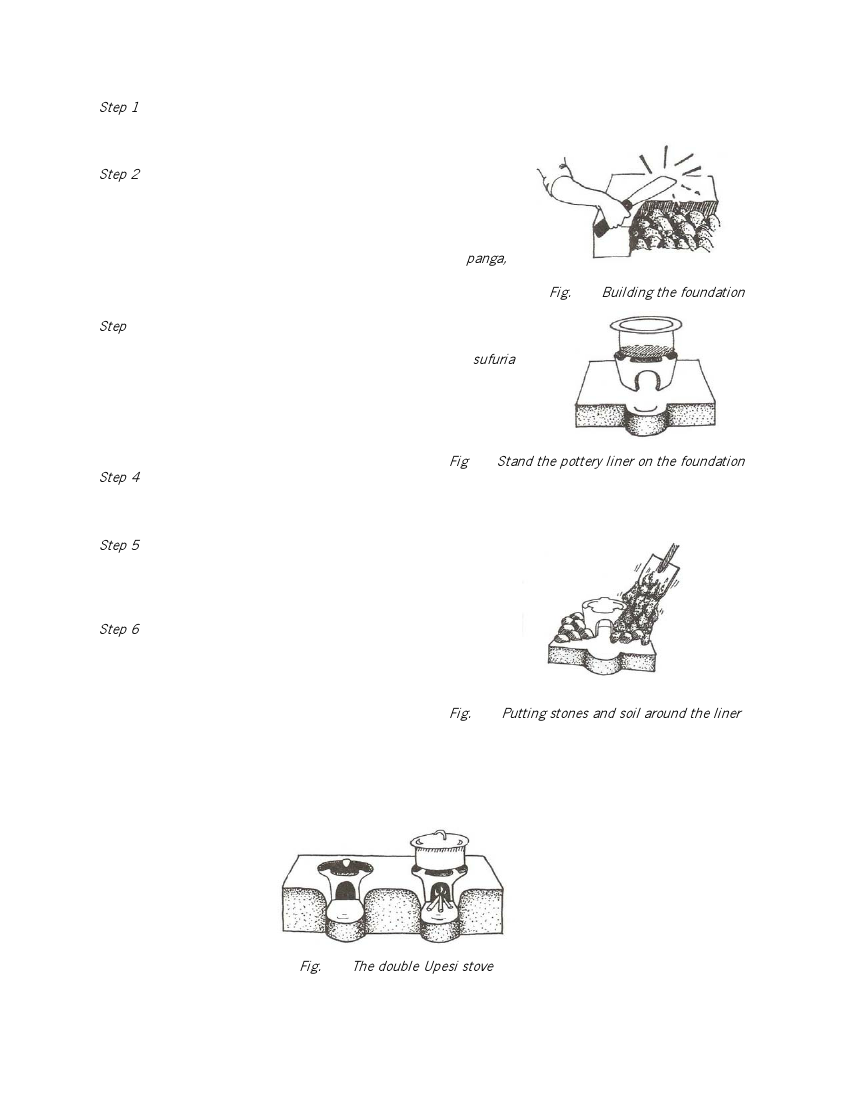
Step 1
Mix the soil with a little water until it just holds together in a ball when you squeeze it. Soak the liner in
water.
Step 2
Choose a site for your stove. This should be a place where it will not
be rained on. It should face the direction from which air flows into
the room. Mark the area to be covered by the stove and make the
foundation by laying stones over the area. Cover the foundation stones
with the soil mix and compact it with a flat piece of wood or panga, to
make it level, flat and strong.
Fig. 7.3 Building the foundation
Step 3
Stand the pottery liner on the foundation with the liner door facing the
kitchen door. Make sure the stove is level by putting a pan or sufuria with
water on the stove. Check that the water covers the bottom of the pan
evenly. If not, adjust the liner until it is level.
Fig 7.4 Stand the pottery liner on the foundation
Step 4
Put more stones and soil around the liner, leaving the door clear. Compact the soil until it just reaches the
top of the liner, leaving the pot-rests free.
Step 5
Make sure that you have a wood-rest area in front of the stove door
to support the fuelwood. Finish shaping and smoothing the stove
until it looks attractive.
Step 6
Put a layer of small flat stones at the bottom of the firebox and tap
them level. Let the stove dry for seven days, then smear with
traditional plaster. This could be a mixture of clay, ash and cow
dung. Allow the stove to dry for three more days.
Fig. 7.5 Putting stones and soil around the liner
Your stove is now ready. First, light a small fire to ensure that it is completely dry! Remember that the
stove can be built to suit the user. There are many options. The stove can be built with a big surround that
can be used like a table or shelf. Alternatively, you can build a small one to fit into a small kitchen. It can
also be built high or low to suit the cook. Two liners can be installed next to each other as a double stove,
but remember to leave enough space between them so that there is room for a large pot on each liner.
Fig. 7.6 The double Upesi stove